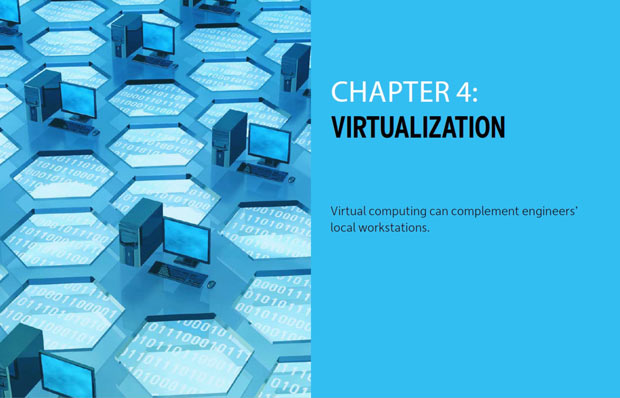Virtualization Comes of Age
Latest News
February 9, 2016
 Dear Desktop Engineering Readers:
Dear Desktop Engineering Readers:
Describing virtualization can sound like something spiritualist Ram Dass would float by you: “Your workstation is here now even though it’s not here.” Virtualization connotes a desktop workstation equivalent—operating system, storage software, you name it—accessible online. IT builds and maintains your virtual infrastructure, and you access a virtual machine (workstation) from wherever you are. Today’s Check it Out link goes to a captivating presentation on virtualization technology and what’s in it for the engineering community, especially small- and mid-size businesses (SMBs) with overworked IT departments.
Like many technologies, virtualization can trace its development back a couple of decades. But it’s only been over the course of the past few years that the technologies have converged on a point where virtualization is a highly viable option for the computational demands of CAD, CAM and CAE users. “Virtualization,” chapter 4 of The Design Engineer’s High-Performance Computing Handbook from Desktop Engineering and Intel, traces that trajectory while simultaneously explaining virtualization’s benefits, describing key technologies and reporting on where it’s likely headed.It also dispels some misconceptions such as its name. Virtualization isn’t entirely software, albeit that’s an enabler. A virtual desktop infrastructure needs top-shelf server-class hardware as well as a lot of connectivity hardware and software. And an initial investment on the cheap won’t cut it. However, a big return of investment can be realized in less than year when done right.
Virtualization’s benefits are abundant. For individual engineers, it means you’re not chained to the cubicle. Your virtual workstation provides analysis, design and rendering horsepower from the field, the client’s site or home. Developers like PTC and SOLIDWORKS now support virtualization. It could mean that you can use your preferred personal devices as clients linked to work.
The benefits for IT range from maintaining and upgrading a single infrastructure rather than dozens of workstations, to improved security and lower annual infrastructure costs. And emergent Desktop-as-a-Service (DaaS) vendors specializing in on-demand virtualization capabilities could be the option SMBs constrained by IT or budgetary resources long for.
 “Virtualization,” chapter 4 of The Design Engineer’s High-Performance Computing Handbook from Desktop Engineering in partnership with Intel, explores what the technologies enabling virtual computing mean for design engineers and their companies, as well as the potential the technology holds for the future.
“Virtualization,” chapter 4 of The Design Engineer’s High-Performance Computing Handbook from Desktop Engineering in partnership with Intel, explores what the technologies enabling virtual computing mean for design engineers and their companies, as well as the potential the technology holds for the future.Chapter 4 of The Design Engineer’s High-Performance Computing Handbook is a read two or three times then pass it on to your colleagues type of affair. It has what you need to know about the practicality of virtualization technology for design engineering, and there’s much to learn. Hit today’s Check it Out link and see for yourself.
Thanks, Pal. – Lockwood
Anthony J. Lockwood
Editor at Large, Desktop Engineering
Subscribe to our FREE magazine, FREE email newsletters or both!
Latest News
About the Author
Anthony J. Lockwood is Digital Engineering’s founding editor. He is now retired. Contact him via [email protected].
Follow DE





